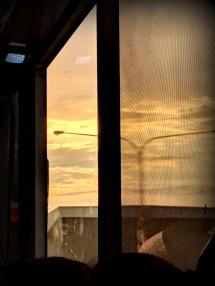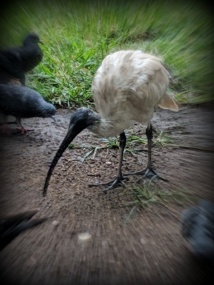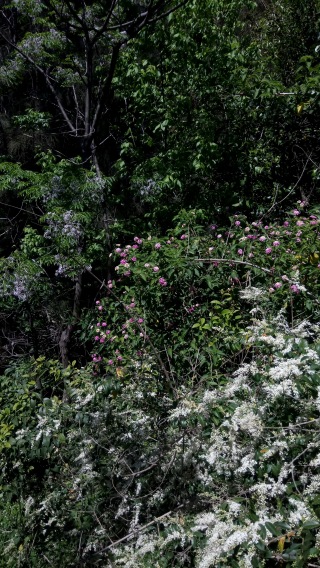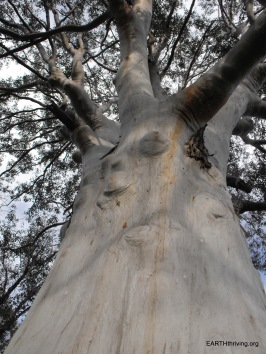 It’s come to this: – this burning time when New Year fireworks seem an atrocity as our precious forests burn, homes burn, creatures’ homes burn, creatures burn, people creatures burn – and it began so long, long ago. In the Beginning…
It’s come to this: – this burning time when New Year fireworks seem an atrocity as our precious forests burn, homes burn, creatures’ homes burn, creatures burn, people creatures burn – and it began so long, long ago. In the Beginning…
In the Beginning the Elements had to sort themselves out into some sort of balance for life in all its brilliant, creative, complex experimentation to emerge. But Fire had to pull back and be contained, because too much Fire upset the balance of everything else. Fire had to be but the tiniest spark of energy between microscopic molecules forming cells, forming communities, differentiating into more complex life forms. Besides that, Fire had to be as far away as a burning Sunstar or gathered into the bowels of the planet under the mantle of Earth. The other Elements, Air, Water and Earth seemed to have far less limitation placed upon them. All was well, barring a few drastic changes over the millennia that shifted the composition of Air at one point, and the balance of Water and Earth from time to time. Overall, Fire was kept enough at bay for life to flourish without great burning. Until one creature arose – a complex interconnection of micro communities that serviced a brain that seemed to surpass others in imagination, and see the Elements in such a way as to be able to name them.
This creature – this brightly imaginative biped, imagined new ways to use and work with the Elements – at first, with reverence and awe – and with eyes wide open to the complexity of interrelatedness all around them, in which the Elements resided with power and fragility. In time, however, as the bipeds grew in their skill and confidence, they began to lose some of their awe and reverence. They learnt to bend the Elements to their will, and most especially, they developed a hunger for the creative power of Fire. They sacrificed Earth to Fire and were rewarded with bricks, and hardened wood for spears and arrows, with metals for jewels and metal for tools, with glass and pigments and gems. They sacrificed Water to Fire and were rewarded with steam which they harnessed to drive engines. They used Air to fan the flames and made them burn hotter and longer with the peat, coal and oil of Earth.
In time there arose among the bipeds ones who grew rich and bloated with power through all they sacrificed to Fire and all they gained in return. They lost all sight of the complex interrelatedness, both powerful and fragile, of the Elements in the very existence of Life – any life. Other bipeds could see what was happening and cried out, sending prophets and emissaries to the powerful ones, begging and pleading for the sacrifice to Fire to stop, for Fire was growing too strong as the balancing forces of Water, Earth and Air were becoming depleted. But the powerful bipeds stuck their fingers in their ears, buried their heads in the sand and went on holiday to Hawaii. They killed the prophets and imprisoned the emissaries as a warning, for they were both blind and cruel.
And so it was that the Water in the land was hoarded up into pipes, dams and reservoirs, and sacrificed to mines for more coal for Fire, and Earth grew dry. And Earth could no longer help the trees and plants to survive, and hold Water for the animals, and the Great Dying began. And Air filled up with carbon from all the burning of Fire, and could no longer release the daytime heat back into space as before, and Earth grew hotter.
And now, bipedal ones, with all our marvellous imagination, we step into a new decade where Fire is too much and reigns supreme. Fire has become a god unleashed from balance through too much worship, where the other Elements have been sacrificed, torn apart, hoarded up, trapped and fed to Fire. If we can imagine a way to live with less energy, to bring back awe and reverence for the Elements in equal proportion, to honour Water, Earth and Air as they should be, perhaps we can find our way forward through the challenges to come.
Here’s to 2020.
The video below shows the drying stream bed in my local bush reserve area. Yet turn up the sound and you can hear running water, water for our sewerage systems in the pipes that run following the stream. Everything around is desperate for water, but it’s used to transport our shit. this is how we have captured Water hoarding it away from Earth and the rest of our natural system that needs it so badly if anyone is to survive.






 Last year I used my birthday money to buy two stones. I don’t often buy stones. I am wary of the means of their mining and the truths around their origins, and I think we are too quick to rip treasures from the ground and careless of the consequences. Nevertheless, for my birthday I indulged myself a little.
Last year I used my birthday money to buy two stones. I don’t often buy stones. I am wary of the means of their mining and the truths around their origins, and I think we are too quick to rip treasures from the ground and careless of the consequences. Nevertheless, for my birthday I indulged myself a little.



 As long as traditional teaching methods keep us focussing on the “about” that we are required to regurgitate in exams and essays, we will never care very much for our subject. Imagine if we were taught “bee-ness” or “tree-ness” or “eagle-ness” instead, learning to use our imaginations to delve deeply into what it might feel like to be that bee buzzing from flower to flower. Imagine sensing what a bee might sense – the large, looming shadow of a human nearby, creating distortions in the air, sounds experienced at different vibrations and awareness of potential danger in the possibility of a spider lurking under the petals.
As long as traditional teaching methods keep us focussing on the “about” that we are required to regurgitate in exams and essays, we will never care very much for our subject. Imagine if we were taught “bee-ness” or “tree-ness” or “eagle-ness” instead, learning to use our imaginations to delve deeply into what it might feel like to be that bee buzzing from flower to flower. Imagine sensing what a bee might sense – the large, looming shadow of a human nearby, creating distortions in the air, sounds experienced at different vibrations and awareness of potential danger in the possibility of a spider lurking under the petals. Development of this sort of imaginative awareness of other creatures is the beginning of broadening empathy and creating a network of caring. If we can teach ourselves, our friends and our children, to use their imaginations in this way, I believe we can strengthen our network of care for our planet immeasurably. This will inevitably include care of our fellow human beings, as we strengthen our ability to imagine walking in another’s shoes and thus learn people, as well as bees, trees and other animals.
Development of this sort of imaginative awareness of other creatures is the beginning of broadening empathy and creating a network of caring. If we can teach ourselves, our friends and our children, to use their imaginations in this way, I believe we can strengthen our network of care for our planet immeasurably. This will inevitably include care of our fellow human beings, as we strengthen our ability to imagine walking in another’s shoes and thus learn people, as well as bees, trees and other animals.




 old rough eucalypt, with stringy bark, and blood red sap, that defies identification. It hides a myriad spiders and beetles in the dark and dusty nooks and crannies of its base. It doesn’t look beautiful in the usual way. It’s liable to make people think of dark things in the night that bite, and they will probably warn their children away from it.
old rough eucalypt, with stringy bark, and blood red sap, that defies identification. It hides a myriad spiders and beetles in the dark and dusty nooks and crannies of its base. It doesn’t look beautiful in the usual way. It’s liable to make people think of dark things in the night that bite, and they will probably warn their children away from it. there is the Grandmother Tree – a lemon gum. She is huge, her bark shiny white at the right time, but currently a sort of dusky pink, as we are nearing the end of bark fall. My arms would not even go half way round her old trunk, and she stretches high and always had cockatoos,
there is the Grandmother Tree – a lemon gum. She is huge, her bark shiny white at the right time, but currently a sort of dusky pink, as we are nearing the end of bark fall. My arms would not even go half way round her old trunk, and she stretches high and always had cockatoos,


